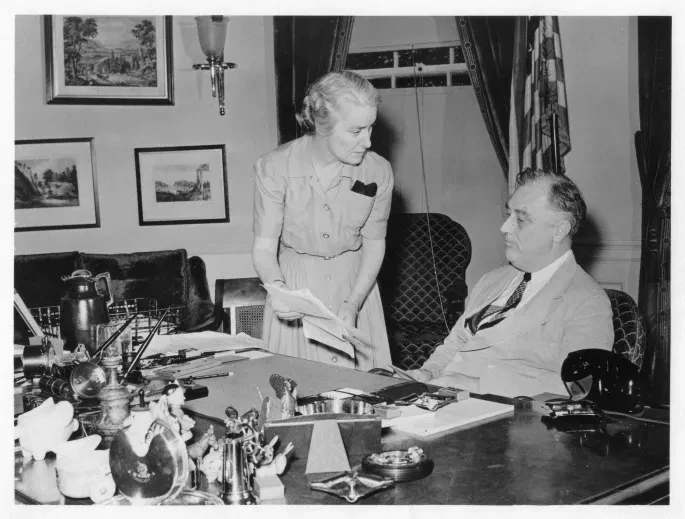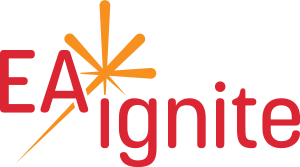Happy Admin Month! Take a look at what’s in store ›
April 4, 2025
How Far We’ve Come: A Celebration of the Administrative Profession
.jpg.medium.800x800.jpg)
From typewriters and filing cabinets to AI-driven solutions and strategic partnerships, the administrative profession has undergone a remarkable transformation. Once seen as purely clerical, administrative roles now encompass a wide range of skills and responsibilities that drive business success. Let’s take a moment to celebrate how far the administrative field has come—and where it’s headed.
A Brief Look Back
The administrative profession has deep roots in history, with early secretarial roles emerging in the late 19th and early 20th centuries. Back then, the job was synonymous with shorthand, dictation, and manual filing. As offices evolved, so did the tools of the trade. Typewriters gave way to computers, Rolodexes to digital contact lists, and physical files to cloud storage.

Though often overlooked in the history books, many early secretaries played vital roles behind some of the most powerful men in history, quietly shaping the course of events from behind the desk. Marguerite “Missy” LeHand served not only as President Franklin D. Roosevelt’s secretary but also as a close advisor and gatekeeper, wielding quiet influence in the White House during the Great Depression and World War II. Kay Summersby similarly provided indispensable support during WWII, but to General Dwight D. Eisenhower, offering not just administrative support but emotional steadiness and trusted counsel. And Helen Dukas, who served as Albert Einstein’s personal secretary for over 30 years, became one of his most trusted aides by managing his correspondence, protecting his privacy, and later co-editing many of his posthumous works. These women, among countless others, proved that behind every great leader, there was often a brilliant, composed, and capable assistant keeping the wheels turning.
Voice from the Field: Then vs. Now
While the historical milestones of the administrative profession are remarkable, they only tell part of the story. To truly appreciate how far the field has come, we wanted to hear from those who’ve lived the evolution firsthand. That’s why we sat down with two long-time administrative professionals turned trainers, Rhonda Scharf and Julie Perrine, to hear how the role has changed from the inside out.
“When I landed my first full-time job straight out of college, I was 19, brimming with enthusiasm and convinced I could tackle everything under the sun,” says Rhonda Scharf. “Little did I know my manager had a slightly different vision. It didn’t take long to realize that my role was more about reacting than acting because apparently, the ‘take charge’ approach wasn’t in the manual. Micromanagement became my new best friend, though I don’t think I even knew that was a term back then.”
As offices began to digitize, Rhonda found herself stepping into a more proactive, tech-savvy role.
“Suddenly, I was expected to figure out this shiny new computer and then teach everyone else how to use it. One day, we were just order-takers; the next, we were the office superheroes. Lucky for us, we’re pretty flexible. As the technology evolved, so did our value—and let’s be honest, we’re now considered the secret sauce that keeps the whole operation running smoothly.”
.jpg.medium.800x800.jpg)
Julie Perrine echoed many of those shifts, but with her own unique lens.
“When I started my administrative career more than 30 years ago, access to email and the internet wasn’t guaranteed, and supporting multiple executives meant juggling responsibilities without many of the tools we take for granted today,” she shares. “I learned to use Windows and the Microsoft Office suite as it emerged, transitioning from DOS-based programs, WordPerfect, and even electric typewriters. Setting up a video call between two corporate offices felt like coordinating a NASA launch.”
At the time, Julie says, the role wasn’t seen as a long-term career path.
“Back then, no one was using the words ‘innovative’ and ‘admin’ in the same sentence. Those of us who did were often met with questioning looks.”
But like Rhonda, she’s seen and helped lead a major shift.
“Today, the role has transformed dramatically. Admins bring solutions, not just support, and are often the operational glue that holds teams together. I admire how today’s professionals navigate a flood of digital communication with grace—balancing emails, chats, meetings, and tasks without missing a beat. This evolution didn’t happen overnight, but it’s a testament to the persistence of professionals who knew this career was always more than clerical.”
.jpg.medium.800x800.jpg)
Both Rhonda and Julie’s journeys speak to the same truth: the administrative profession has always required adaptability, grit, and a deep commitment to excellence. Though they started decades ago in vastly different work environments, both women rose through the ranks by embracing change, and now they’re helping a new generation of professionals do the same.
The Rise of Training and Professional Development
One of the most significant drivers of the profession’s evolution has been the growing emphasis on training, upskilling, and certification. Programs like ASAP’s PACE Certification, alongside in-person training conferences such as APC and EA Ignite, have empowered administrative professionals to expand their capabilities and embrace new challenges with confidence.
This shift is more than anecdotal—it’s backed by data. ASAP’s groundbreaking 2025 State of the Profession Report, to be published on April 23, 2025, reveals that 59% of administrative professionals feel supported in their development, and over 56% now have access to professional development funds. Certification rates have also surged. Up to 59% of APs now hold a professional credential, with ASAP’s own PACE Certification named among the most widely held and financially rewarding.
Today’s admins are expected to be project managers, event planners, systems thinkers, and tech-savvy problem-solvers. And thanks to increased access to professional development, many are not just meeting those expectations, they’re exceeding them. Training has not only expanded what admins can do, but it’s also strengthened their ability to advocate for their worth and impact.
The Future of the Administrative Profession
Regardless of the persistent challenges, including gender bias, lack of recognition, and evolving expectations, the momentum behind recognizing administrative professionals as strategic business partners is growing. Organizations, trainers, and professionals alike are championing this shift, calling for admin roles to be viewed not as purely supportive, but as integral to leadership, innovation, and operational success.
According to findings from ASAP’s 2025 State of the Profession Report, the role of the administrative professional is continuing to evolve in dynamic and powerful ways:
Tech adoption is on the rise: Over half of APs now use AI tools like ChatGPT, Grammarly, and Microsoft Copilot at work, doubling the adoption rate from the previous year. APs at more senior levels are leading the way, with 62% using AI to streamline workflows, optimize processes, and enhance executive communication.
Leadership skills are a growing focus: Skills such as strategic planning, project management, and executive-level communication are no longer “nice to haves”—they’re quickly becoming core competencies. Senior-level admins are increasingly leading high-impact initiatives and managing teams, while those at earlier stages are prioritizing leadership development to prepare for future advancement.
The path forward is clear: With ASAP's four-stage model of career progression (Assisting, Supporting, Partnering, and Leading), the administrative field now has a flexible, scalable framework for advancement. APs are no longer locked into a one-size-fits-all role; instead, they’re building careers with depth, variety, and long-term growth potential.
- A new generation is entering the field: While the average age of APs continues to rise, the profession is also attracting fresh talent. The number of APs with fewer than five years of experience has grown, and these newer professionals are more likely to hold bachelor’s degrees and seek out certifications. This generational shift is infusing the field with fresh perspectives, new ideas, and a readiness to push boundaries.
The future belongs to those who are adaptable, proactive, and ready to lead. And as the profession continues to evolve, today’s administrative professionals are laying the groundwork for a new era, one where their impact is undeniable and their contributions are recognized at every level.
.jpg.medium.800x800.jpg)
A Celebration of Progress
The evolution of the administrative profession is a testament to the resilience and adaptability of those who have shaped it. From the early days of manual labor to today’s strategic roles, admins have continuously proven their value and pushed the boundaries of what’s possible.
As we celebrate how far the field has come, let’s remember that the journey isn’t over. The future holds exciting opportunities for admins to innovate, lead, and thrive. How will you contribute to the next chapter?
Ready to Shape the Future?
Become an ASAP member today and join a powerful community of administrative professionals who are leveling up their skills, expanding their networks, and making their voices heard.
Want to dive deeper into the trends shaping our field? Join us for our 2025 State of the Profession Findings Webinar on Administrative Professionals Day—April 23, 2025. Don’t miss this chance to explore the data, hear expert insights, and see what’s next for the profession.
Join the Conversation
Welcome to the ASAP Circle, a community platform for peer-to-peer conversation on trending topics, professional challenges, and shared experiences. We even have designated spaces for weekly Tuesday Coffee Breaks.









